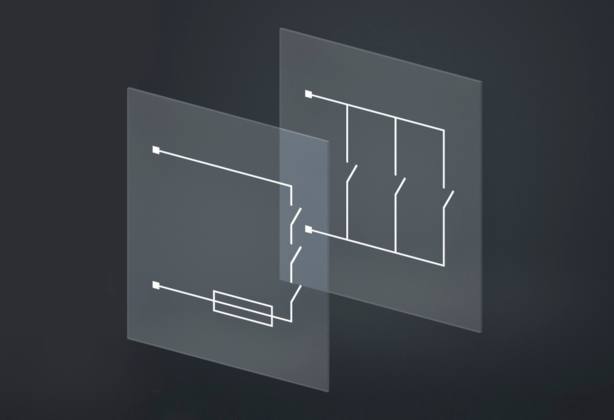
Driving technology.
Ensuring reliability.
Redefining safety.
Safety Relays with Integrated Diagnostics and LFT
Safety Relays—Triple Protection
If there is an emergency situation in a process plant, a quick response is needed. Sirens, warning lights, or active cooling systems must be activated safely in line with the "energized to safe" (ETS) procedure, while motor controls or emergency shut-down valves are switched off according to "deenergized to safe" (DTS). To ensure safe signal transfer, Pepperl+Fuchs is setting a new level of reliability with newly developed safety relays. With triple redundant switching contacts, the interface module from the tried-and-tested K-System provides reliable and safety-related activation and deactivation for applications in accordance with IEC61508 up to SIL 3.
Features



Benefits
Minimum Test Effort

Continuous Monitoring

Unrestricted Compatibility
Reliable Operation with Diagnostics and Line Fault Transparency (LFT)
The new safety relays are based on a 1oo3 architecture with triple-redundant relays. Together with integrated diagnostics and line fault transparency, the safety relays are very reliable and simplify testing. In this video, learn more about these functionalities …
Modules with line fault transparency require less wiring in the field and greatly increase the level of safety. They do not only monitor switching signals, they also provide seamless monitoring of the cables on the field and control sides. Learn more about LFT ...
In emergencies such as a fire in the engine room of a ship, a fast response is required: Sprinkler systems must be switched on and the fuel supply to the source of the fireswitched off. In this video, see how the new safety relays from Pepperl+Fuchs set a new standard in terms of reliability and safety thanks to their 1oo3 architecture …
1oo3 Architecture for Maximum Safety
The 1oo3 architecture—connected in series in DTS applications and in parallel in ETS applications—ensures maximum availability of the safety function after failure of up to two contacts. This provides a safety-relevant advantage compared to force-guided contacts: If a contact on a force-guided relay fails, this can merely be detected and the actuator is not switched on or off. Additional wiring for evaluation channels in the control panel—with the associated effort and costs—is required to feed back information on the position of the switching contact. The new safety relay with 1oo3 architecture thus ensures higher reliability while also featuring easier handling.

Safety Integrity Level (SIL)
As technical equipment can pose a safety risk to people, it is important to identify, quantify and reduce the resulting risks. Based on risk analysis methods, necessary risk reduction is determined.
A low SIL requirement (SIL 1) means that only a comparably low risk reduction is necessary, whereas a higher Safety Integrity Level (for example SIL 3) requires a greater degree of risk reduction. An assessment of a safety relevant system is therefore performed easier if the risk of failure of the relevant components is already known. For that purpose, Pepperl+Fuchs offers a large number of products with a SIL/PL assessment.

Contact Us
Do you have questions about the safety relays, or do you want to receive more information? We are happy to help! Simply fill out the contact form to send us a message.
 More Information
More Information
- Relay Modules Up to SIL 3
- Pepperl+Fuchs Blog: The Benefits of Modules with Line Fault Transparency
- Safety Product Selector Use our selection tool to quickly find more SIL/PL assessed devices.
- Safe Firefighting on Ships with Intelligent Safety Relays
 Downloads
Downloads
- Brochure: "Safety Relays with Diagnostics" (PDF; 384 KB)




 +49 621 776-0
+49 621 776-0